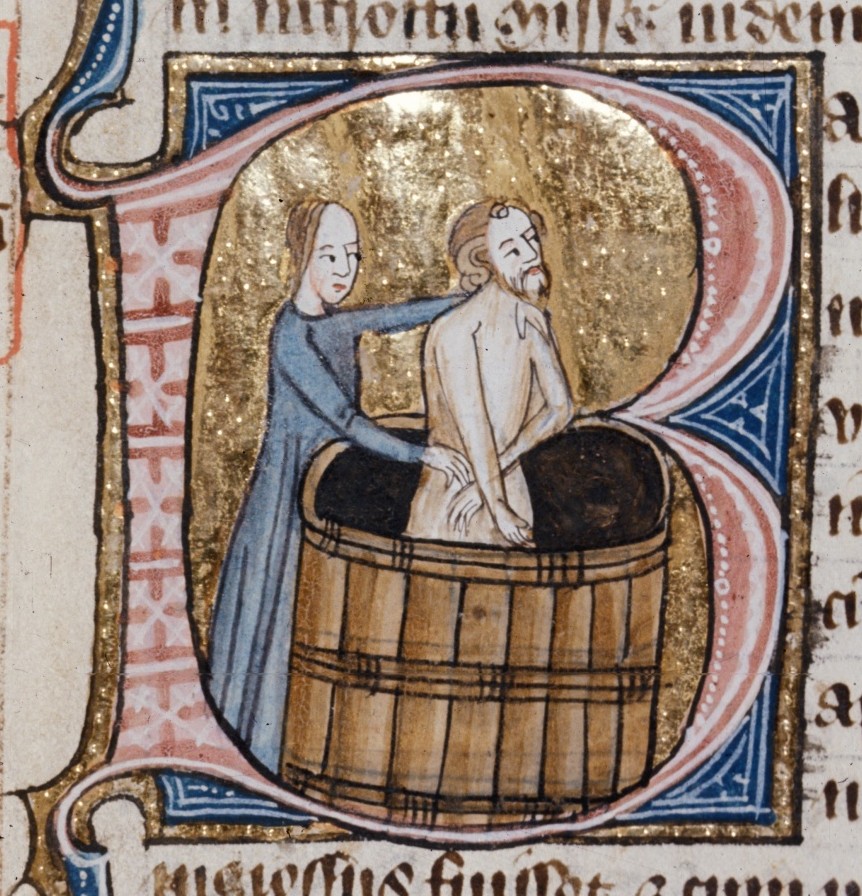Tuesday, July 8, 2014
Medieval bathing - a legacy from Rome - and quite common
Hygiene was coveted in the Medieval period.
by Ferdinand III
Hygiene was a common and daily concern in Medieval Europe. It is a lie, a corruption of fact, to claim that the Medieval citizen never took a bath; or did so only once a year. Most people were not averse to bathing ascribed in Hollywood and the fervid minds of the historical revisionist to Church dogma [clergy were notoriously clean]; nor to 'superstition' about water spreading disease [in fact it does so depending on the condition]. Not only was hygiene and cleanliness highly valued so too was personal beautification. Vanity did not begin in the advent of the periwig Enlightenment egotists. Looking one's best and feeling clean – which is a normal human impulse and a part of being alive – was part and parcel of daily Medieval living.

Medieval literature from the 6th century onwards abounds with references to bathing, much of it done in public until the arrival of the great plagues in the 14th to 16th centuries. One medical treatise, the Secreta Secretorum, has a section on baths. This early treatise notes that excessively long baths might lead to fatness and feebleness. There is no information given as to why this might be so. In another early work entitled, Magninius Mediolanesis there is given over 57 bathing prescriptions to use in specific conditions, like old age, pregnancy and travelling. A multitude of rules around bathing, running to a booklet in length are proffered.
In Clean: A History of Personal Hygiene and Purity historian Virginia Smith has written: 'By the fifteenth-century, bath feasting in many town bathhouses seems to have been as common as going out to a restaurant was to become four centuries later. German bath etchings from the fifteenth century often feature the town bathhouse, with a long row of bathing couples eating a meal naked in bathtubs, often several to a tub, with other couples seen smiling in beds in the mid-distance.'
Bathhouses were routinely used for prostitution as well.
The myth around the lack of cleanliness in the middle-period might be related to the drop-off in public bath usage from disease. Plague and disease from the 14th century onwards would have necessarily curtailed public interactions and common resource sharing. Bathing would have been no different in this regard. It became a private affair, centred for most around a large wooden barrel often filled with rain water. Large estates, monasteries, upper class dwellings and the rich could afford piped in water and there soon developed the modern concept of bathrooms.
In any event bathing was both necessary and common in the Medieval period. A legacy one could say, from the era of the Roman empire, which introduced into Europe the idea of a concern for daily hygiene. The Roman empire mutated into 3 Germanic and many smaller kingdoms post 476 AD. There is no proof that Europeans would have disavowed the civilizational benefits of bathing post-Roman rule.